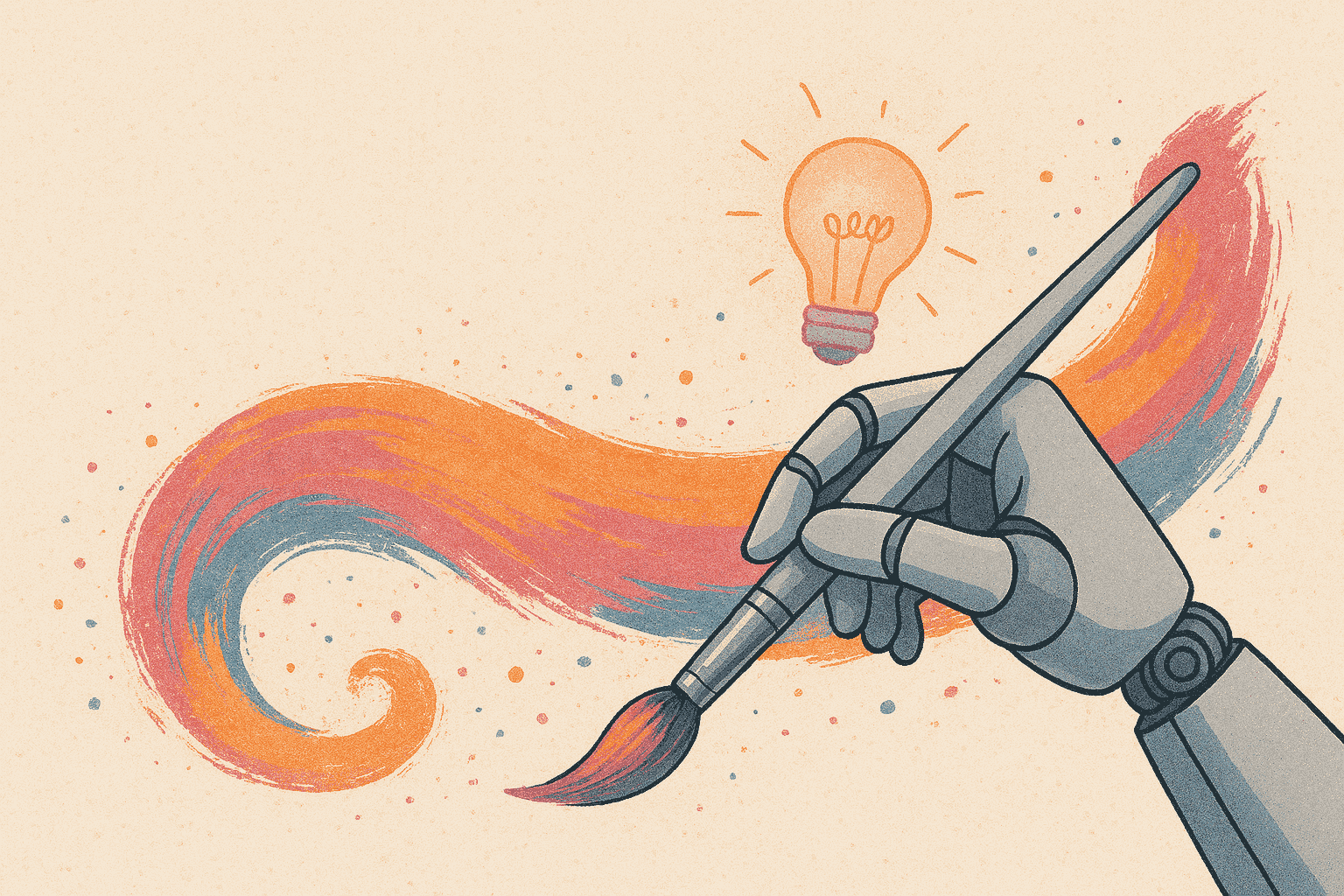Artificial Intelligence has revolutionized nearly every industry—from healthcare to finance, logistics to marketing. But one of the most fascinating and controversial frontiers of AI is its role in creativity. Tools like ChatGPT, DALL·E, MidJourney, and Runway have made it possible for anyone to generate stories, art, music, and even entire films in seconds. Yet the debate continues: Is AI truly creative, or is it simply mimicking human-made patterns? And more importantly, can generative AI move beyond replication to genuine innovation?
In this blog, we’ll explore the current landscape of AI in creativity, its limitations, the philosophical questions it raises, and whether the next era of AI can transcend imitation to become a true partner in innovation.
Understanding AI’s Role in Creativity
At its core, creativity involves two things: novelty and value. Humans create by blending experiences, knowledge, and imagination into something original and meaningful. Generative AI, however, works differently—it analyzes massive amounts of data, identifies patterns, and produces outputs that resemble human work.
- A text-to-image model like MidJourney doesn’t understand art in the way a painter does. Instead, it recognizes millions of correlations between text prompts and visual patterns, then recombines them into something new.
- Similarly, large language models generate text by predicting the most probable sequence of words based on training data, not by consciously thinking.
So while AI outputs may appear innovative, critics argue they are more like sophisticated collages of existing ideas rather than true creations.
Where AI Already Excels in Creativity
Despite these limitations, generative AI has opened doors to remarkable applications:
- Design & Visual Arts – Graphic designers and digital artists now use AI to brainstorm concepts, generate variations, and accelerate workflows. For instance, an artist can create 50 logo prototypes in minutes and refine the best one.
- Writing & Storytelling – AI assists authors, marketers, and screenwriters by suggesting plot twists, generating dialogue, or writing entire drafts. While the human touch is still necessary, AI speeds up ideation.
- Music & Audio – Tools like AIVA and Soundraw generate melodies and background scores. Musicians use them as creative companions rather than replacements.
- Film & Media – AI-driven video tools can create visual effects, edit scenes, or even produce short films from scripts.
- Product Innovation – Companies experiment with AI in industrial design, fashion, and architecture, where generative models propose fresh designs based on constraints like material efficiency or sustainability.
Clearly, AI is already playing a transformative role in the creative process, but the question remains: is this true creativity or just automation?
The Limitations of Generative AI in Creativity
Even with these breakthroughs, current AI systems face several creative limitations:
- Lack of Intentionality – AI does not have goals, emotions, or lived experiences. Creativity in humans often stems from personal struggles, cultural context, or aspirations, which AI cannot replicate.
- Risk of Homogenization – Because AI relies on existing datasets, outputs can feel repetitive or “too similar.” Over-reliance on AI might lead to creative stagnation instead of innovation.
- Bias in Training Data – If the dataset reflects historical biases, stereotypes may emerge in AI-generated content. This limits originality and reinforces old patterns.
- No True Understanding – AI cannot evaluate whether something is “meaningful” or “beautiful.” Its “creativity” is statistical, not intentional.
Can AI Go Beyond Replication?
The real challenge for AI lies in transcending imitation. Here are a few ways researchers and innovators are working toward that goal:
1. Agentic AI in Creative Fields
Emerging agentic AI systems are designed to act autonomously, set goals, and make decisions. In creativity, this could mean AI tools that not only generate outputs but also critique, refine, and improve them iteratively without human intervention.
2. Cross-Disciplinary Creativity
Humans often innovate by combining ideas from different fields—like bioengineering inspired by nature. Generative AI could do the same, blending concepts from art, science, history, and technology to spark new forms of creation.
3. Human-AI Co-Creation
Instead of AI replacing human creativity, the future lies in symbiosis. AI could serve as a partner that pushes humans beyond their comfort zones. For example, an AI might suggest unconventional musical scales or surreal design elements that humans wouldn’t imagine on their own.
4. Self-Learning Beyond Training Data
If future AI models develop mechanisms for continuous learning—absorbing knowledge in real time and experimenting independently—they could move closer to true innovation.
Philosophical Questions Around AI and Creativity
The debate isn’t just technical—it’s philosophical and ethical.
- What does it mean to be creative? If creativity is the recombination of existing knowledge into something novel, AI might already qualify. But if it requires consciousness, emotion, and intent, AI falls short.
- Who owns AI-created work? If AI produces a painting or a song, is the creator the algorithm, the company that trained it, or the person who gave the prompt?
- Should AI be considered an artist? Some exhibitions already showcase AI art, but the authenticity of “AI as an artist” is hotly contested.
The Future of AI in Creativity
AI’s creative journey is still unfolding. While today’s generative systems primarily replicate and remix, the next decade could see breakthroughs that edge closer to true innovation. The sweet spot may not be AI as a standalone creator, but as a collaborative tool—one that enhances human creativity by offering new perspectives, reducing technical barriers, and expanding the boundaries of imagination.
Much like the invention of the camera didn’t kill painting but transformed it, AI will not eliminate human creativity. Instead, it will redefine what it means to be creative in the digital age.
Conclusion
So, can generative AI go beyond replication and innovate? The answer lies in how we define creativity and how AI evolves. While today’s models are still tethered to their training data, future iterations may explore new frontiers through autonomy, cross-domain reasoning, and human-AI co-creation.
One thing is clear: the story of AI in creativity is not about machines replacing human imagination, but about machines expanding the possibilities of what humans can create.


